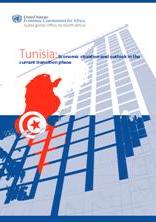Tunisia: Economic situation and outlook in the current transition phase

2011: start of the Tunisian revolution
Gafsa mining basin
For nearly six months in 2008, a major social movement, indeed, the largest ever in Tunisia, since President Ben Ali came to power in 1987, shook the Gafsa mining basin, situated 350 kilometres south-west of Tunis. Although this is a phosphate-rich area, it is beset with unemployment and poverty. For months on end, attempts to crackdown on the protest movement and riots led to hundreds of deaths and arrests. These events were considered as the start of a process leading to the Tunisian revolution, nearly two years later.
Youth unemployment: a long overlooked volatile issue
On the eve of the 2011 revolution, unemployment among young people (15-24 years) in Tunisia had reached 31 per cent1. The 5 per cent mean annual growth rate of the in the three years prior to the revolution belied a very dire economic situation for the country’s young population. According to the National Statistical Institute, the number of unemployed graduates had doubled in four years, from 66,200 in 2005 to 128,100 in 2008. In that State-run economy, a higher education diploma was seen as a guarantee for a stable job, often in the civil service or para-public sector. This, however, changed with the major structural reforms that took place in the post-Bourguiba era. Many university graduates found themselves abandoned, once they got on the job market, causing much resentment from young people and the Tunisian society in general, especially as the country had invested in education as one of its pillars of development.
The act of Mohamed Bouazizi, a young man from the town of Sidi Bouzid, in the centre of Tunisia, who set himself on fire in December 2010, triggered a revolution, fostered by unemployment,
poor governance and social injustice.